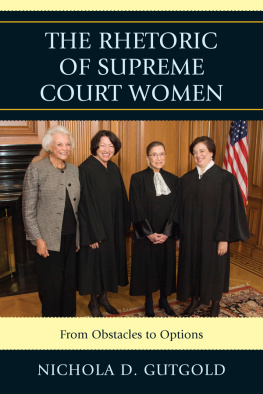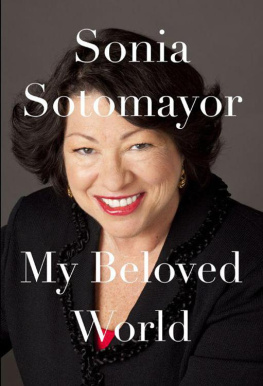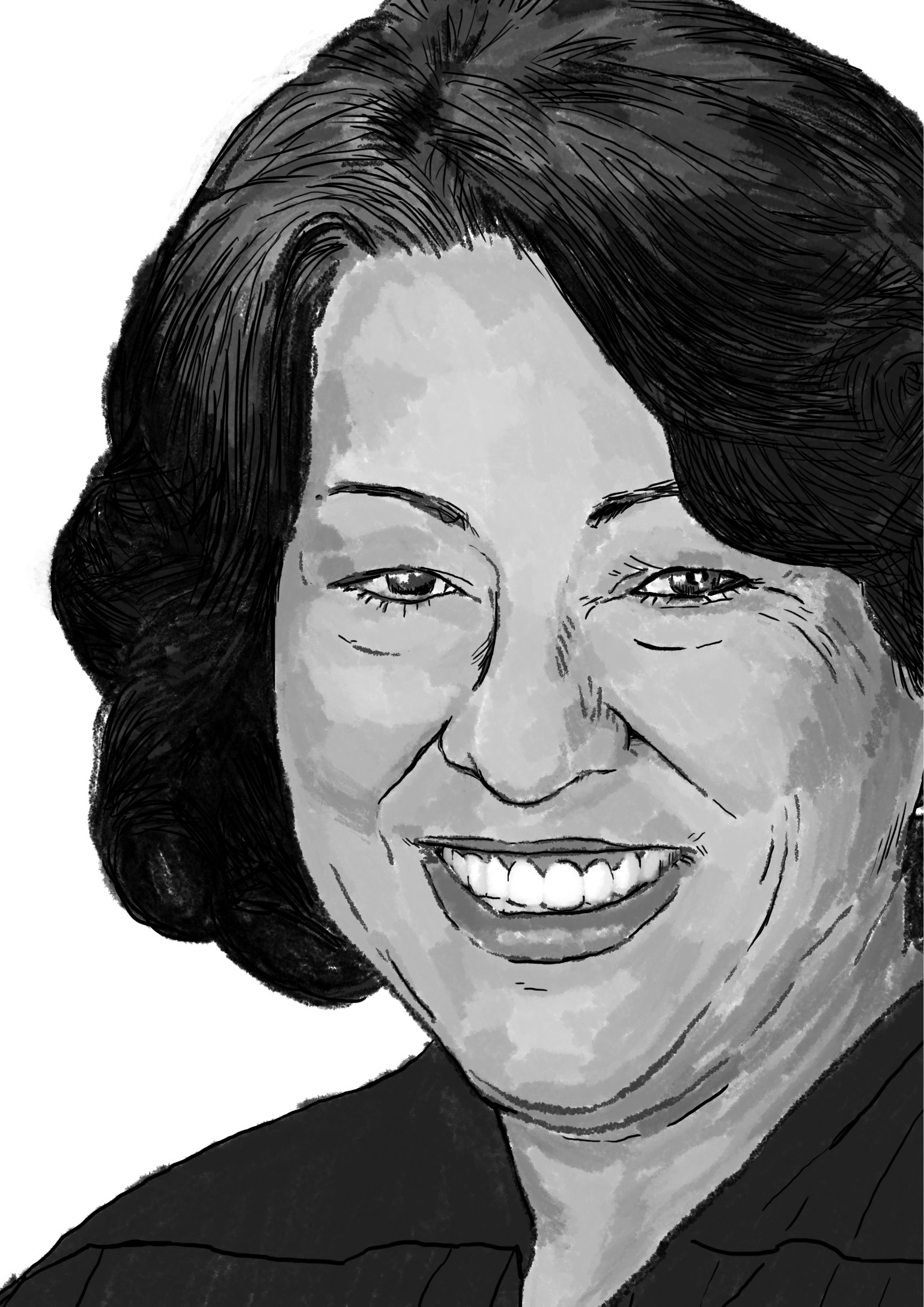All rights reserved. No part of this book may be reproduced, stored in a retrieval system, or transmitted in any form or by any meanselectronic, mechanical, photocopying, recording, or otherwisewithout the prior written permission of Lerner Publishing Group, Inc., except for the inclusion of brief quotations in an acknowledged review.
An imprint of Lerner Publishing Group, Inc.
Chapter One
Breaking the Curse
I probably wasnt going to live as long as most people... So I couldnt afford to waste time.
They said she was cursed. Wondered how she could be a normal kid if she had a disease that could kill her. Wondered if she could have a normal childhood. Asked what would become of her. Asked whether she would die before she made it to high school.
When Sonia Sotomayor was only eight years old, she attended Blessed Sacrament Catholic School in the Bronx, in the heart of New York City. All students had to go to daily Mass at the church next door. One day, in the middle of services, Sonia became woozy. She tried desperately to be quiet and not draw attention to herself. Punishment came to those who misbehaved.
But her vision blurred to the point that the brilliant stained glass windows of the church turned yellow, and then everything went black. She fainted.
She woke to see the nuns looking down at her, with concern etched on their faces. Shivering from fright and from the cold water they had splashed on her face, she lay still and waited for her mother to arrive.
Celina Sotomayor hurried over from work. The worry about Sonia had already been nagging at her, and she knew something might be terribly wrong. Sonia was thirsty all the time, and she also suffered from dizzy spells and blurred vision. She often fainted and wet the bed.
Her body betrayed her over and over, and she was afraid of losing more control. I was ashamed, Sonia said.
Taking her to the hospital to begin a battery of tests frightened both daughter and mother. When a technician pulled out a needle to draw blood, it was bigger and scarier than any Sonia had ever seen before. The thought of that needle being pushed into her arm was worse than the fainting spells.
She screamed, No! and jumped out of the chair and ran. The staff chased her. It was no wonder that she was nicknamed Ajihot pepperby her family, because she could never sit still. Quick and always moving, her mother said that even at seven months old, Sonia didnt walk or crawlshe got up and ran.
That day at the doctors office, Soniathe little ajiused her speed and agility to escape from the staff and blood tests. Fast as ever, she bolted from the room. She raced through the hallways, and once outside, slid under a car and curled into a ball so no one could reach her.
For a few moments, she was safe.
But then one of the staff membersshe couldnt see whograbbed hold of her foot and dragged her out from beneath the car. Fear tore through her and she screamed at the top of her lungs. They carried her back into the hospital nonetheless. Her cries continued when they plunged the needle into her arm later that day.
When the results came in, Sonias mother sat in the doctors office while Sonia waited in the hallway. She peeked through the slightly opened door. All of a sudden, her mother started sobbing. Her shoulders quaked.
The tears frightened Sonia. It was the first time she had ever seen her mother cry.
As a nurse who helped others, Celina was a strong woman. She saw the worst of cases, helped the dire in need, and comforted and treated patients who were often incredibly afraid. They relied on her for strength, comfort, and reassurance.
When she saw her mother break down that day, Sonia knew the news couldnt be good. A nurse quickly ushered Sonia from the room so her mother and the doctor could talk privately. Sonia feared the worst. Finally, Dr. Fisher, who had been the family doctor for many years, invited her in.
The diagnosis: juvenile diabetes.
Sonia had type 1 diabetes and would need daily insulin injections.
Diabetes is a disease that prevents a person from being able to process sugar. The cause of type 1 diabetes is unknown, although there does appear to be a genetic factor. Insulin is normally produced naturally in the body to help move the sugar from the blood to cells, and when the body doesnt produce it well enough, people cant get the nutrients that they need from the food they eat. Insulin injections become necessary or else the symptoms become severelike the ones Sonia suffered from, like being thirsty, wetting the bed, having blurry vision, and fainting. If left untreated, even more severe consequences could result.
Her mother seemed devastated, but Sonia was relieved to finally know what was wrong. Now they could treat her. Now she could get on with her life.
Dr. Fisher shared that he also had the disease, although his was type 2 diabetes. (Although some of the symptoms are similarincluding blurry vision, being thirsty, and needing to urinate oftenthe pancreas continues to produce insulin, so injections are not typically needed.) He reassured her that she could still lead a healthy life if she changed her diet and took her medication. He gave her a sugar-free soda, but after just one sip, Sonia thought it horrible and politely told him no thank you. When he said her diabetes wasnt so bad, Sonia thought, If it isnt so bad, why is my mommy crying?
It was bad enough.
In 2016, the Juvenile Diabetes Research Foundation found that more than 3 million Americans had been diagnosed with type 1 diabetes. But in 1962, not much was known about how to treat the disease, especially when it came to children. Complications could include blindness, heart disease, loss of nerve sensation, potential amputationslosing an arm, leg, or footor even dying young.
What they did know was that diabetes was going to drastically change Sonias life.
Even though she was afraid, she decided that the more she knew, the better she would be able to take care of herself. She didnt want to lose an arm or a leg. She didnt want to die.
Sonia lucked out. Taking into account how frightening it could be for a kid, Dr. Fisher answered her questions directly and without hesitation. He was sympathetic to Sonias turbulent home life. Her disease could cause more heartache and disruption, stress and fear.








